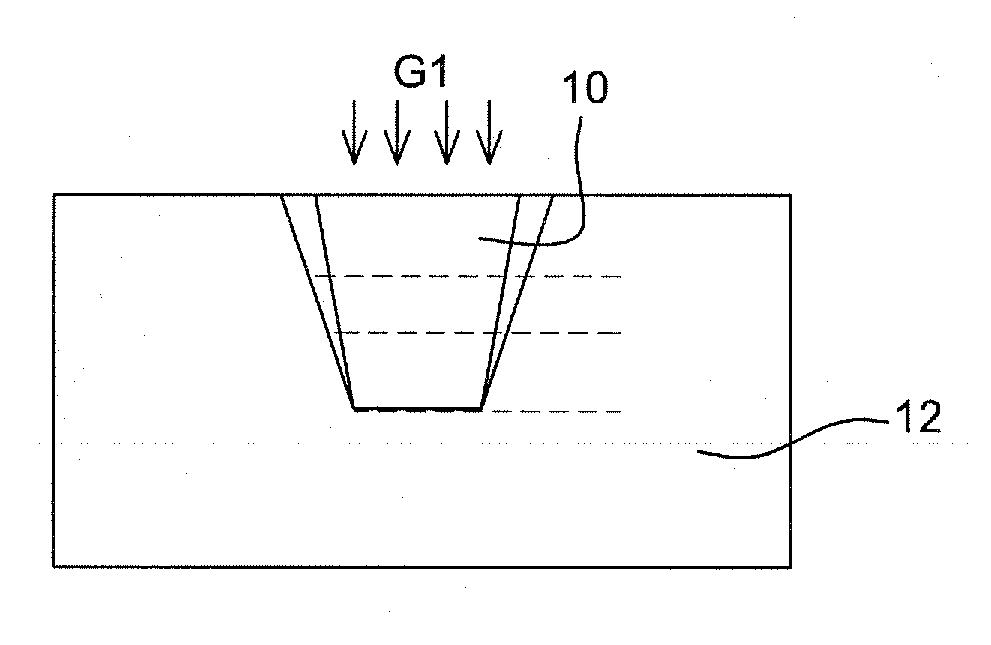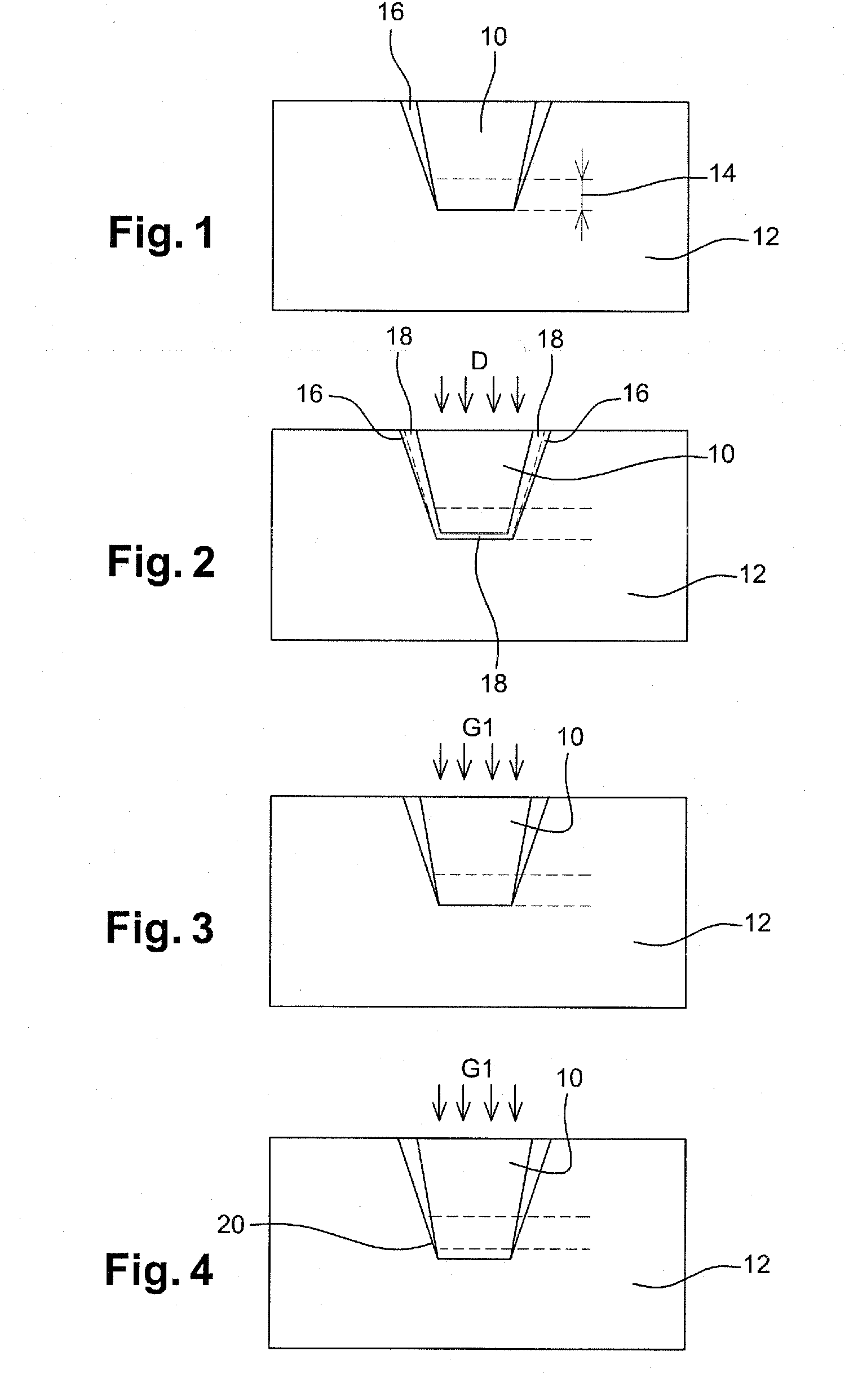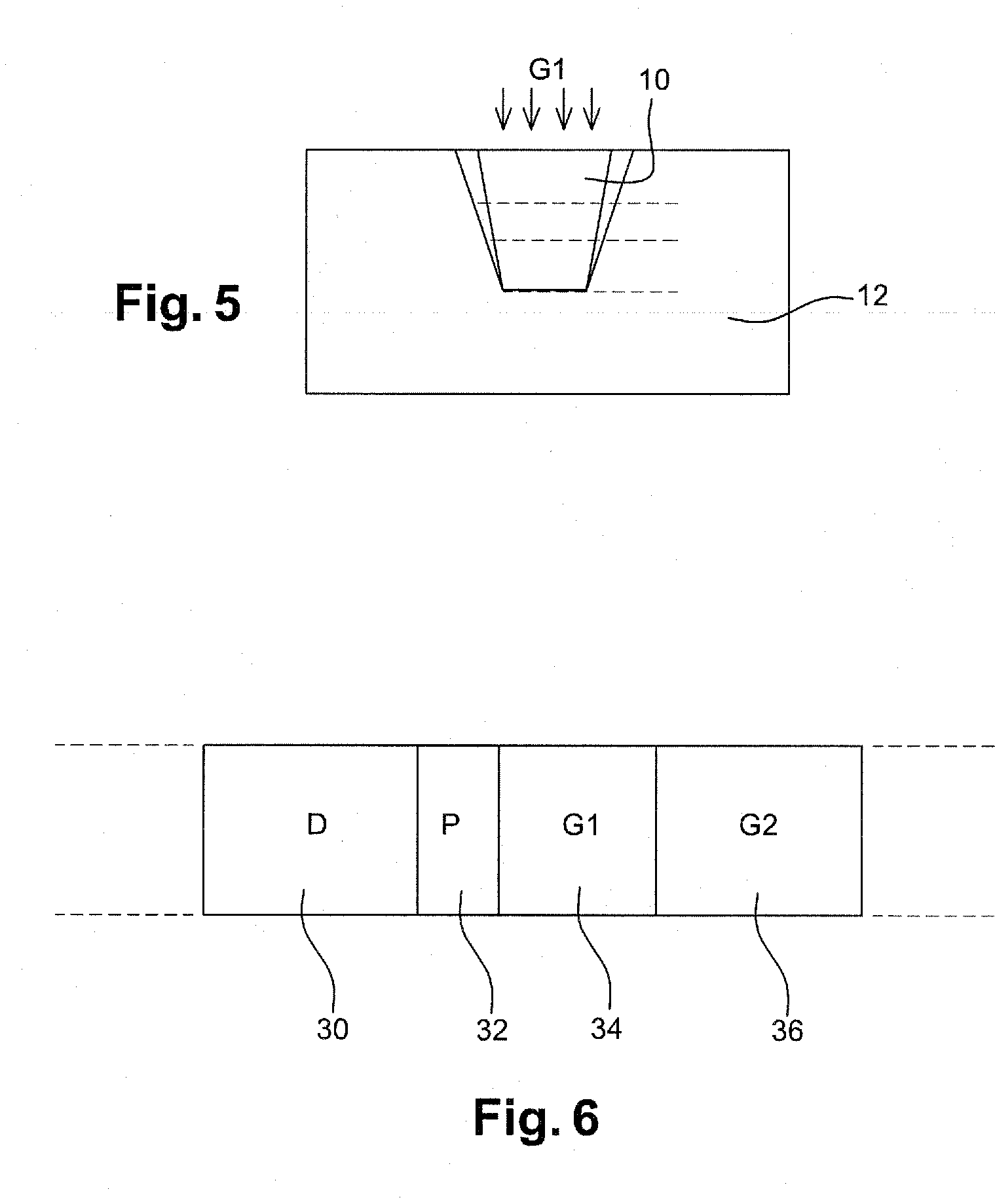Method for producing a deep trench in a microelectronic component substrate
a microelectronic component and substrate technology, applied in the direction of basic electric elements, semiconductor/solid-state device manufacturing, electric devices, etc., can solve the problems of large defect source in the trench, affecting the operation of the components, and affecting the quality of the components, so as to prevent any over-etching phenomenon, less aggressive, and control the profile of the etched portion more accurately
- Summary
- Abstract
- Description
- Claims
- Application Information
AI Technical Summary
Benefits of technology
Problems solved by technology
Method used
Image
Examples
Embodiment Construction
[0035]An inventive embodiment will now be described in relation to FIGS. 1 to 5, the various layers having been deliberately exaggerated in the interests of greater clarity.
[0036]The method comprises a series of elementary etch cycles, each etching a portion of a trench 10 produced in a substrate 12, for example a semi-conductor substrate, in particular of silicon.
[0037]FIG. 1 shows the result obtained at the end of previous elementary cycles, the result of the last elementary cycle 14 being shown between the dotted lines. In particular, the trench 10 is coated with a passivation layer 16 of decreasing thickness.
[0038]An elementary cycle starts with the deposition of a new passivation layer 18 in the trench 10. For example, a plasma is used with only a fluorocarbon gas which deposits a carbon- and fluorine-based polymer on the side walls and the bottom of the trench 10 (FIG. 2). The passivation layer deposited 18 is to advantage constituted by fluorocarbon, and comes, for example, f...
PUM
 Login to View More
Login to View More Abstract
Description
Claims
Application Information
 Login to View More
Login to View More - R&D
- Intellectual Property
- Life Sciences
- Materials
- Tech Scout
- Unparalleled Data Quality
- Higher Quality Content
- 60% Fewer Hallucinations
Browse by: Latest US Patents, China's latest patents, Technical Efficacy Thesaurus, Application Domain, Technology Topic, Popular Technical Reports.
© 2025 PatSnap. All rights reserved.Legal|Privacy policy|Modern Slavery Act Transparency Statement|Sitemap|About US| Contact US: help@patsnap.com



